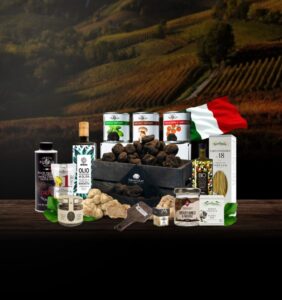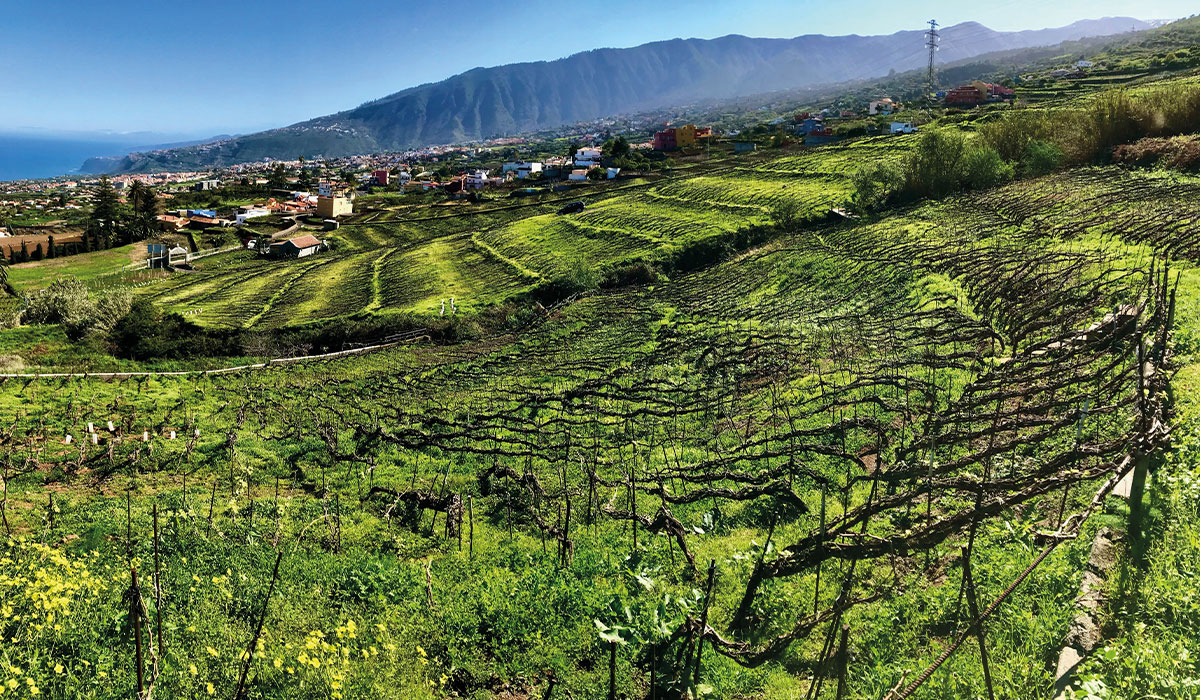
“It is a beautiful moment in Spain because winemakers are interpreting wines by the place and not by the fashion of the time,” Roberto Santana says.
Santana is one of the four founders of Envínate (translates as “wine yourself”), a producer that focusses on distinctive parcels mainly in Spain’s Atlantic-influenced regions.
The former university mates are part of a new wave of winemakers focused on reviving and expressing terruños (terroir). They are unearthing native Spanish grapes, rediscovering old vineyards, and introducing a less-is-more winemaking approach with a goal of authentically expressing each parcel’s terroir.
New oak, synonymous with Spanish reds from more traditionally acclaimed regions like Rioja and Ribera del Duero, is largely eschewed or dialled down to its neutral form. The result is a slew of alluring wines — light, clean and taut, expressing purity of fruit, minerality and freshness.
Call it the Spanish wine renaissance or the wines of New Spain, these styles are galvanising the Spanish wine industry and garnering new fans across the globe.
Two regions, in particular, have been gaining traction: the vertiginous Ribiera Sacra, where Envínate crafts mencia-based wines of integrity, elegance, and finesse. And the Canary Islands, especially the island of Tenerife, where Envínate and self-taught winemaker Jonatan García Lima are producing mineral-driven wines from native grapes grown on treasured, ungrafted vines.
The Precipitous Vineyards of Ribeira Sacra
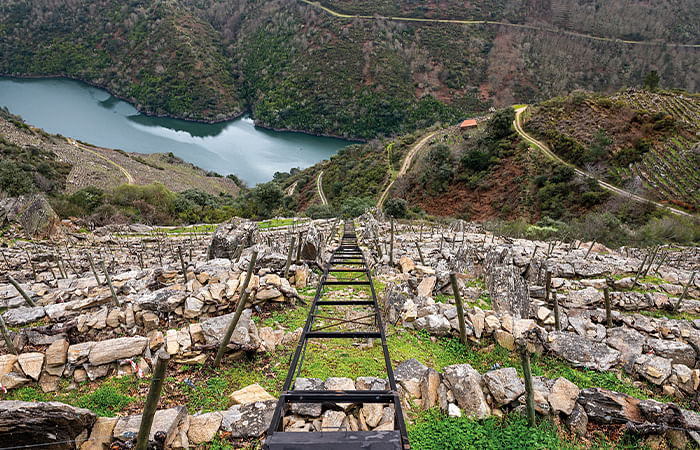
The picturesque region of Ribeira Sacra sits in Galicia, bound by the Atlantic Sea in Northeast Spain. The rivers Sil and Miño traverse the land of valleys and canyons where the vineyards are planted on steep, terraced, and treacherous slopes. The soils are stony, the weather cool, and mechanisation near-impossible.
Red varietal mencia is the most widely planted here, and one of the superstar varietals of the renaissance. Mostly found in Bierzo, where the renowned Palacios family helped put it on the international map, its expressions in Ribeira Sacra are remarkably different.
Mencia is more nuanced in this cooler region, showing earthy red fruits, fresh pomegranate, and raspberry with a herbal note. The lower alcohol offers levity and clever winemaking brings freshness to an otherwise low acid grape.
The team behind Envínate—Santano, Laura Ramos, Alfonso Torrente and José Martínez—is actively engaged in the region. It is where the quartet, after their studies in oenology, started their collective journey with a small 0.75-ha vineyard in 2008. Today, they produce sought-after wines and have a cult following amongst aficionados.
“Our philosophy of making wines is very simple,” Santana says. The wines aspire to reflect the character of the soil and vineyard, the vintage personality and the passion of the people working the lands. All herbicides are banned in the vineyards, as is synthetic chemistry in the cellars.
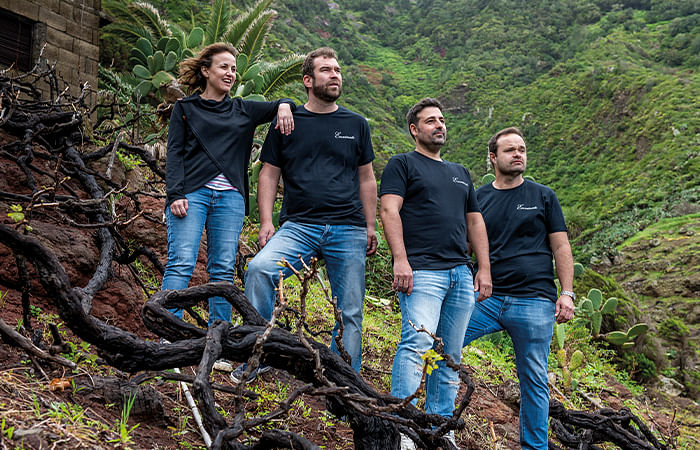
The vignerons have turned to ancient practices of foot-trodding grapes, hand harvests and indigenous yeasts. In the cellar, only neutral barrels are used in addition to concrete and tanks.
“We don’t use new oak because we lose the precision of the terroir,” says Santana. “We want wines to taste of the place, not like coca-cola.”
The winemaking further adapts to the terroir and the vintage. “We don’t have a recipe in the cellar. We interpret the vintage in our winemaking,” Santana adds. When facing a warm vintage like 2020, for instance, Envínate may increase its whole cluster fermentation (grapes with stems on) to bring freshness to the wine.
The quartet craft four wines in the region, including Lousas Viñas de Aldea, a village wine made from mencia and local varietals. The other three expressions are single vineyard from small, discontiguous plots.
Other notable producers of the region include Guímaro by fifth-generation winemaker Pedro Rodríguez, whose Camiño Real is crafted from 40 to 60-year-old mencia wines, and Dominio de Bibei by Javier Domínguez, whose energetic wines have a hint of earthy and mineral counterbalance.
Tenerife, Canary Islands
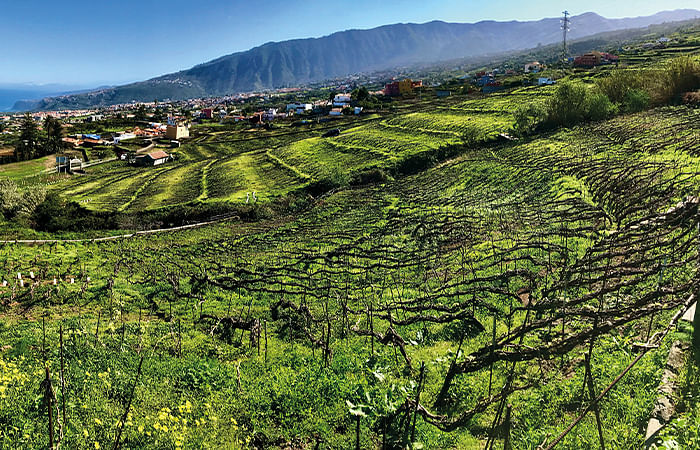
Best known as a tourist magnet, the Canaries have a long history of wines. The archipelago of seven islands sits off the coast of Morocco. Framed by beautiful azure water beaches, the island’s vineyards were planted over 300 years ago at high altitudes.
Remarkably, the vines are free of phylloxera, the aphid that ravaged European vineyards in the 19th century.
Jonatan García Lima of Suertes del Marqués is the leading producer in Tenerife, the largest island of the cluster. His wines are considered the benchmark for the region and exported to over 40 countries.
“We started Suertes del Marqués as a hobby; we didn’t have any education on wine. Later, I left my job and dedicated myself to the winery,” he recounts.
García Lima is passionately preserving the terroir of Tenerife, including the region’s ungrafted vines—a rarity, since post-phylloxera, European vines have out of necessity been grafted on aphid- tolerant American rootstock—and the ancient cordon trenzado (braided cord) trellis system that braids these vines into a cord with fruit emerging only from the end of its braid.
“Not to be in touch with international commerce for 200 years was an advantage,” he says. It meant that the island was not only untouched by phylloxera, but its 50 native varietals have never been under threat of being pulled out in favour of popular or trending varietals.
“Nobody wants a syrah from Tenerife. If I want great syrah, I will go to Rhone,” says García Lima.
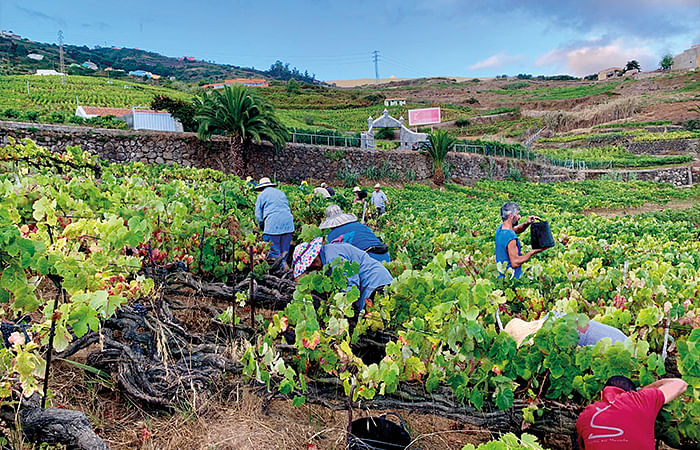
Among the reds, listan negro, is the most popular, especially in the Orotava valley where García Lima is based. “The listan negro grape is like pinot d’aunis. It does not give you a deep and dark colour. Its characteristic is its black and white peppery notes,” he shares.
The most planted white is listan blanco, otherwise known as palomino fino and primarily used in sherry production in Jerez. The grapes are harvested early to preserve natural acidity, and the weather allows them a long hang time.
“We don’t have a very cold winter, so the vines wake up earlier, but also, we don’t have a warm summer, so the ripening is very slow, which means we have grapes with 11.5 – 12.5 degrees of alcohol that are ripe,” he states.
García Lima produces a dozen wines, including everyday village wines like 7 Fuentes and Trenzado, as well as single-vineyard expressions such as La Solana and Vidonia. The wines are primarily made from the two listan grapes, and a smattering of other native grapes found on the island.
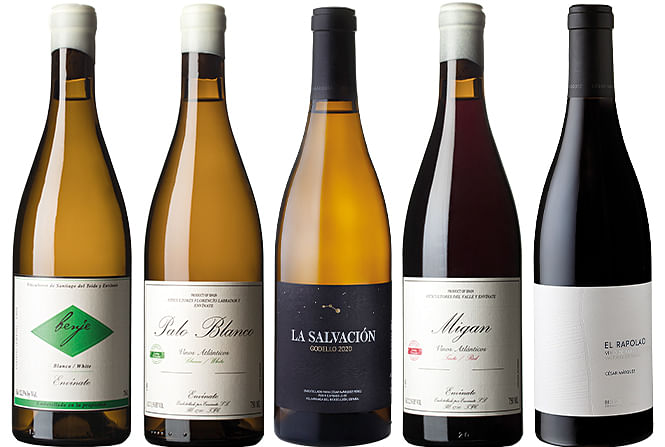
Santana is also a native of the island, and before founding Envínate, he led the winemaking at Suertes del Marqués for eight years.
Envínate currently owns and leases small parcels of land on volcanic soils and at high elevations of 1000m in the Táganan region. The flagship wines include Benje Tinto made from listan negro grapes, capturing the crunch and freshness of pomegranate and cranberry fruits, as well as salinity, and the racy Benje Blanco made of listan blanco grapes.
Ten years ago, Tenerife wines were an unknown entity, but fortunes have changed, and they now enjoy international acclaim. García Lima says he never expected the success, but at the same time, he is wary of Canarian wines becoming a fad. “It is important for me to become a classic producer,” he adds as he works on crafting age-worthy wines on the island.
There are many regions and producers going through a similar renaissance. Author Luis Gutiérrez, who chronicled the works of the new wave winemakers in his book The New Vignerons, writes: “This is the new generation of vignerons currently making some of the best wines in Spain, although some people are not yet aware of it. They represent Spanish wine’s present and future, but are closely linked to its past, using traditions that have gradually been forgotten over the years, traditions that many of us are sure will be the future.”
(Related: Wines from Thailand? Yes please)


